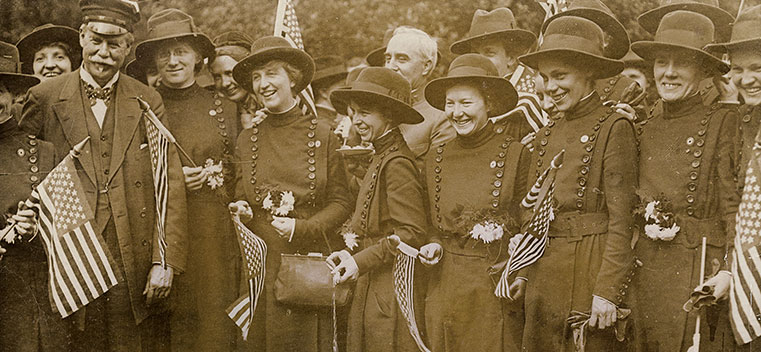
Then: Northwestern Unit Cared for War Wounded
The work of Base Hospital 12 is reflected in a large collection of that unit's records, now held by Northwestern University Archives. Those interested in the history of the unit or of Northwestern's involvement in the war effort should feel free to contact University Archives at archives@northwestern.edu.
Tell us what you think. E-mail comments or questions to the editors at letters@northwestern.edu.
Find Us on Social Media
Northwestern University Base Hospital treated war casualties during World War I and World War II.
In July 1916, months before the United States entered World War I, Frederic Besley began organizing a general hospital unit in response to the Allied power’s dire need for medical assistance. Officially called U.S. Army Base Hospital No. 12, the unit came to be known as the Northwestern University Base Hospital. Commissioned as a major, Besley, an 1894 graduate of the Feinberg School of Medicine, became director and chief of surgical services for the unit.
Most of the medical officers came from Northwestern, and many of the enlisted men had put their studies on hold to join the unit. John F. Wright ’19 was one of those students. He and the rest of his fraternity joined the U.S. Army Medical Corps as a group.
They became part of a 240-person unit that set sail from New York in May 1917 on the Mongolia. Tragedy struck soon after departure. During target practice on the open sea, ordnance fragments struck several nurses, killing two: Edith Ayres and Helen Wood. Their deaths were among the earliest U.S. casualties of the war, and they were the first female Americans killed in military service.
Over the course of the next 22 months the unit expanded to 330 men and women who operated a 1,500-bed hospital near Boulogne, France, treating some 60,000 patients.
In April 1919, the unit returned home. Most of the enlisted men who had been Northwestern students finished their schooling.
A little more than 20 years later, unit alumnus Michael L. Mason ’16, ’17 MA/MA, ’24 MD, ’31 GME and then-dean of the medical school J. Roscoe Miller ’30 MD, ’31 GME worked closely with the University to revive the Base Hospital for World War II. From December 1942 through August 1945, the 12th General Hospital operated in Ain-el-Turk, Algeria, and Naples, Rome and Leghorn, Italy.



 Facebook
Facebook Twitter
Twitter Email
Email


